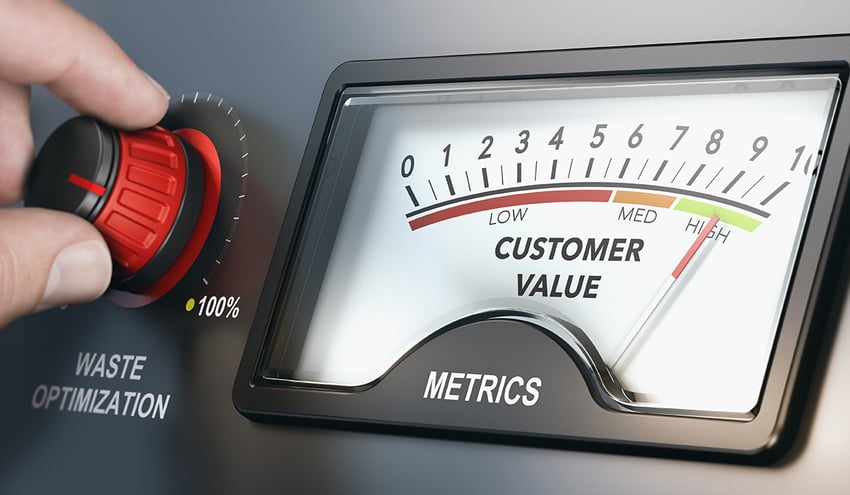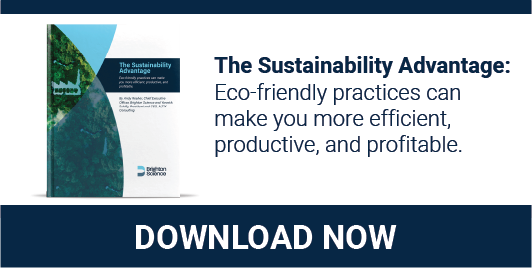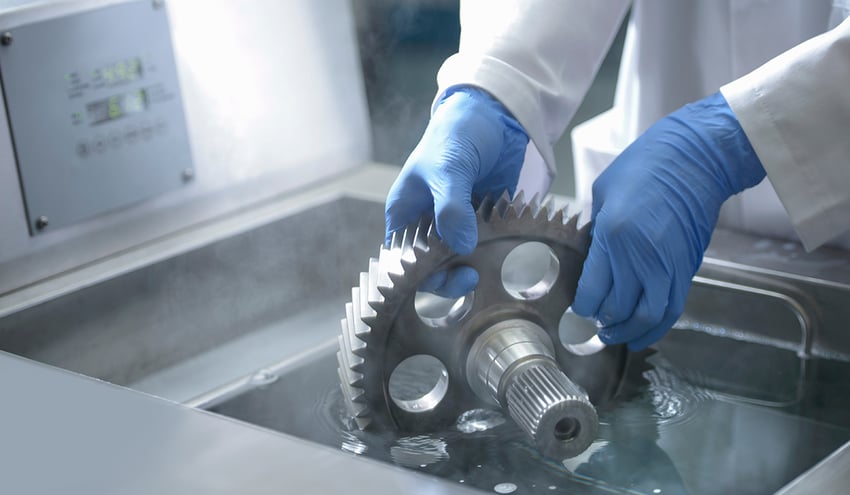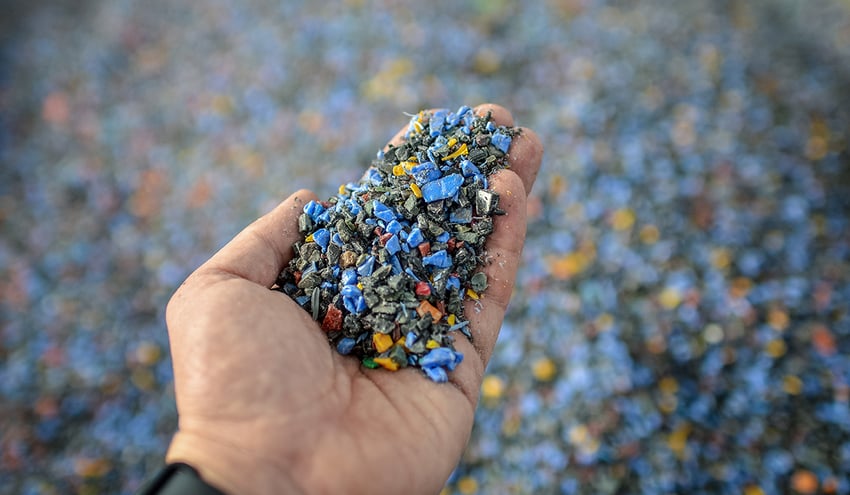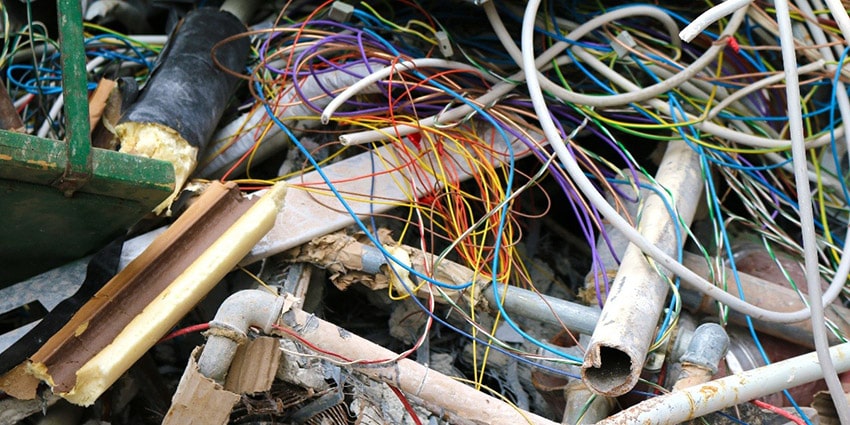In the age of sustainability practices becoming more of the norm, there are a few ways in which your company can both abide by new regulatory standards concerning sustainable changes to the chemicals used and have a positive impact on your total quality management standards.
For the manufacturing industry, keeping customer satisfaction high and stakeholders impressed often goes hand-in-hand with using renewable and more cost-effective materials; plus, it keeps your costs down. There is an opportunity right now to jump on the bandwagon (and meet critical compliance standards) when it comes to TQM. TQM first began in the late 1970s; this was at the same time as sustainability practices – or a lack thereof – were also coming to light. With electric vehicles and other processes back in the limelight, leaders in the manufacturing sector must follow suit or be left in the dust.
The goal is that your company will stay truthful to the following question: How do I utilize the resources I’ve already extracted from the environment while working within the margin? Easy. You choose to follow tried and true total quality management practices alongside an expectation to be sustainable with the materials you use. You’ll work to stay true to the internal standards you set for operational efficiencies, like hitting a certain number for your water contact angle measurements or staying in spec for the entire production process.
Rethink your adhesion manufacturing processes with Surface Intelligence.
Environmental Sustainability is Here to Stay: Small Changes Manufacturers Should Implement
There are two significant ways to aim for a more sustainable business model that also reaches peak business excellence in quality; treating less and working within your margins and using products to their end instead of just once and done.
1. If you’re, for example, manufacturing a product that utilizes lithium or another rare metal, you must consider using alternative materials because those are non-renewable. Once they’re gone, that’s it. So, for the longevity of the enterprise and the preservation of useable materials, your company can take this opportunity to reuse waste from landfills or use byproducts from other projects’ waste.
The goal is to create circularity in manufacturing – using the byproducts (outputs) of your process, to be able to create more inputs.
If your company deals directly with consumers, this may be front of mind for you already. Customers today have access to all sorts of data to ensure the companies they purchase from are economically viable. If sustainability is top of mind for the buyer and you aren’t up to their standards, they’ll take their business elsewhere. But if your company primarily deals with other manufacturers or vendors, your goals are centered around increasing your bottom line. This can be accomplished by implementing small production changes that decrease waste and increase your margins, which will simultaneously increase your competitiveness.
For example, say your parts go through an industrial-strength parts washer before a bonding, sealing, or coating process. Perhaps you’ve been emptying and cleaning the parts washer twice, based on gut feel, to ensure cleanliness. If you are utilizing Surface Intelligence, you’ll realize the machine only needs one wash cycle to reach a cleanliness level that works for the specific bonding applications need. This knowledge will reduce your overall energy outputs for that plant and will save that parts washer from needing to be serviced nearly as often due to wear and tear. Additionally, it will stretch your materials and machines to work within their margins and get you the most bang for your buck.
2. Your goal for following sustainability practices handed down either by a regulatory body or another group is to treat less. If you take a more conservative approach where you’re completely using and reusing your materials, not only will you increase your Return on Investment, but you’ll also cut costs in your overall production time, energy, and materials in the long run.
For example, say you have the option to switch to an aqueous solution from a petroleum-based solution for cleaning. That change is not only cost-effective, but it is less dangerous for your employees, increases your financial performance in the long run, and is less destructive for the planet – a win-win-win! But there is one downside to using aqueous (water-based) solutions instead of the old-school aggressive solutions: it requires a watchful eye to ensure it stays in spec.
Sustainability as it Applies to Total Quality Management
As materials utilized in manufacturing change and evolve, methods of assessing quality must also evolve. Customers, regardless of their location, will always need goods and services of excellent caliber, regardless of how the materials were sourced. So, how does Total Quality Management (TQM) correlate with sustainability?
TQM practices describe a system of management that is based on continuous improvement and high standards of work in every aspect of a company’s operations. Adding energy efficiency supports the efforts of TQM and other corporate goals. Implementing technology and standard operating procedures that reduce the volume of energy used in industrial production processes (energy efficiency) adds to the control you have over your outputs.
According to a LinkedIn article that links sustainability to TQM practices, “In summary, quality helps you achieve your goals now, but sustainability ensures those goals are met tomorrow as well.”
Your TQM practice, for example, could be incorporating Surface Intelligence methods, like checking the contact angle of your materials before and after going through a painting or cleaning process. This way, you’re checking at each and every critical control point where issues or contaminants could be introduced, ruining your product line and costing you thousands in wasted materials and time lost.
These types of things may not seem like big changes, but according to a report by Global Trade, the average manufacturer loses 12-15% in profits just on inefficient machinery, causing excess energy consumption. If you’re netting up to 12 million at the end of the year, that’s another 1.8 million you’ve missed out on by not employing the methodologies behind TQM and sustainability.
The Competitive Advantages of Adding Numerical Value to Sustainable Development Projects
Utilizing both sustainability and TQM practices alongside your Surface Intelligence methods will create a hard-to-reach competitive advantage for your company. As sustainability processes in your product line increase, non-reusable waste decreases, ROI increases, and you’ll start to pull ahead of your competition. If you’re working in a sector of manufacturing with a high level of government regulatory rules for sustainability practices, you can use it as a crutch or embrace sustainability and let it drive innovation and product quality through the roof! Find new and reusable ways to manufacture parts and products while keeping quality products on the conveyor belt to become a true competitor.
Applying Surface Intelligence to your manufacturing from a top-down approach (starting in the product development phases instead of on the plant floor) can be multi-dimensional and complex, but the return on investment is worth the effort. Through partnering with us, you’ll hear from our experts about how easy it is to trace back problems to their Achilles Heel and fully remedy the problem – not just patch it – to keep products at high quality. Plus, it’ll make tracking your outputs a breeze. When you assign a numerical value to your sustainability efforts and keep that data on hand, you can share it via the click of a button with another plant manager or R&D specialist and get everyone on the same page and working toward the same goal.
Optimize the power of next-gen connectivity with data & surface intelligence.
Implementing Surface Intelligence to Increase Competitiveness in a TQM-Focused World
Manufacturing in an IoT-centered world is tricky, to say the least. For each machine in your plant in the Midwest, 15 technicians are needed to make sure it runs efficiently. Multiply those 15 technicians by eight plants worldwide, and you could form an entire little league baseball team AND still have people on the bench. Make sure your players are well equipped to hit a home run and take the variability of human error out of the equation by using a standard measurement, like water contact angle, to keep your products in spec from the Midwest to halfway around the world.
Brighton Science’s goal is to help you gain control over your manufacturing processes. Improved control enables greater reliability and less downtime, which equates to a higher level of business performance; thus, the company makes more money YTD. Energy efficiency works seamlessly beside Surface Intelligence tactics by optimizing your technology, tools, and employees to engineer high-quality, low-cost products that use fewer treatments overall. This means more time for your employees to work on the next innovation.
Read more about creating a competitive advantage by implementing sustainability practices in our eBook, "The Sustainability Advantage."

